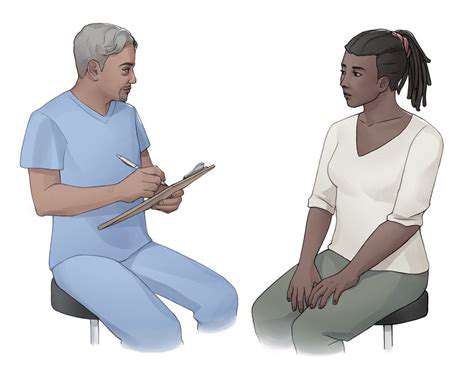Causes and Remedies for Sharp Pain in the Back of the Head
Common Causes of Sharp Pain in the Back of the Head

Muscle Tension and Strain
Muscle tension in the neck and upper back can lead to sharp pain in the back of the head. Poor posture and prolonged desk work often contribute to this tension. Over time, these tight muscles can become inflamed, resulting in aching or sharp sensations. Regular stretching and strengthening exercises can help alleviate this pain and improve posture.
Stress is another major factor that can exacerbate muscle tension. When under stress, individuals are more likely to hold tension in their shoulders and neck. Practicing relaxation techniques can be beneficial in reducing overall muscle tension. Techniques such as deep breathing, yoga, or meditation can provide relief and prevent muscle tightness.
It is essential to recognize the signs of muscle strain early. Seeking physical therapy or professional guidance during the early stages can prevent chronic pain issues. Regular breaks during work, along with ergonomic adjustments, can also play a significant role in preventing muscle-related headaches.
Maintaining good hydration and nutrition is crucial, as dehydration and nutrient deficiencies can worsen muscle tension. Ensuring an adequate intake of water and essential vitamins can help support muscle health and prevent discomfort.
Neurological Conditions
Certain neurological conditions, such as migraines or cluster headaches, can cause sharp pain in the back of the head. These conditions often come with other symptoms, like nausea or sensitivity to light and sound. Understanding the triggers of these headaches can significantly aid in management and prevention. Common triggers include stress, food, hormonal changes, and lack of sleep.
Migraine sufferers may experience a life-altering impact from their pain. They often require specific preventive measures, including medications and lifestyle changes. Keeping a headache diary can assist in identifying patterns and triggers associated with these painful episodes.
It's important to consult with a healthcare professional if headaches become frequent or severe. Neurological evaluations may be necessary to rule out other underlying conditions. Treatment plans may include prescription medications, lifestyle adjustments, and alternative therapies.
Preventive care, such as acupuncture or cognitive-behavioral therapy, can also be effective in managing chronic headaches. Engaging with specialists who understand headache syndromes can lead to better outcomes and quality of life for individuals affected.
Cervical Spine Issues
Degenerative disc disease or herniated discs in the cervical spine can result in sharp pain radiating to the back of the head. These conditions often arise with aging or from injuries and can impact nerve function in the neck. Identifying the underlying cause is crucial for effective treatment. Diagnostic imaging, such as MRIs or X-rays, can help pinpoint the source of pain.
Conservative treatments often include physical therapy and medication management to reduce inflammation and pain. Patients may also benefit from chiropractic adjustments that focus on spinal alignment. In some cases, more invasive treatments, such as steroid injections or surgery, may be necessary.
Good posture is essential in managing cervical spine issues. Ergonomic chairs and proper screen placements can minimize strain on the neck and prevent further complications. Engaging in regular neck exercises can also strengthen the surrounding muscles and improve flexibility.
Understanding the importance of early intervention can significantly improve recovery outcomes. Individuals experiencing persistent neck pain should seek medical advice to explore potential solutions tailored to their specific condition.
Tension-Type Headaches
Tension-type headaches are one of the most common causes of sharp pain in the back of the head. These headaches are characterized by a constricting sensation around the head, often described as pressure or tightness. Identifying triggers like stress, anxiety, or lack of sleep can help in managing these headaches. Simple lifestyle modifications can also prevent their occurrence.
Over-the-counter medications, such as ibuprofen or acetaminophen, are often effective in alleviating tension-type headaches. Regular physical activity and proper hydration can contribute to reduced headache frequency. Establishing a regular sleep schedule and practicing good sleep hygiene are also essential steps in headache prevention.
Creating a calming environment or engaging in hobbies can help in stress reduction, thus minimizing the incidence of tension-type headaches. Techniques such as massage therapy can also provide relaxation and relief from tension, further reducing headache occurrences.
If headaches become frequent or debilitating, consulting with a healthcare provider is recommended. Maintaining open communication about symptoms can lead to more effective treatment plans and improved quality of life.
Remedies and Treatment Options

Understanding the Causes
Sharp pain in the back of the head can be triggered by various factors, including muscle tension, poor posture, and underlying medical conditions. Identifying the exact cause of the pain is crucial for effective treatment.
Other potential causes may include cervical spine issues, migraines, or even stress-related tension headaches. Seeking medical evaluation can help clarify the underlying issues contributing to the discomfort.
Home Remedies
Several home remedies can alleviate sharp pain in the back of the head. Techniques such as applying a warm compress or using ice packs can provide immediate relief by reducing inflammation and relaxing tense muscles.
Additionally, gentle stretching exercises and good hydration can be effective. Staying active and engaging in relaxation techniques can also help prevent the recurrence of pain.
Medical Treatments
If home remedies do not provide relief, medical treatments may be necessary. Over-the-counter pain relievers, such as ibuprofen or acetaminophen, can effectively manage the pain in many cases.
In more severe cases, healthcare providers may prescribe stronger medications or recommend physical therapy. It's essential to follow medical advice to ensure a proper recovery and avoid worsening the condition.
When to Seek Professional Help
It’s important to recognize when sharp pain in the back of the head might require professional attention. If the pain persists or is accompanied by other symptoms, such as visual disturbances or dizziness, it’s crucial to consult a healthcare provider.
Moreover, any sudden onset of severe headache or pain could signify a more serious underlying condition. In such instances, immediate evaluation and treatment are vital to prevent potential complications.
